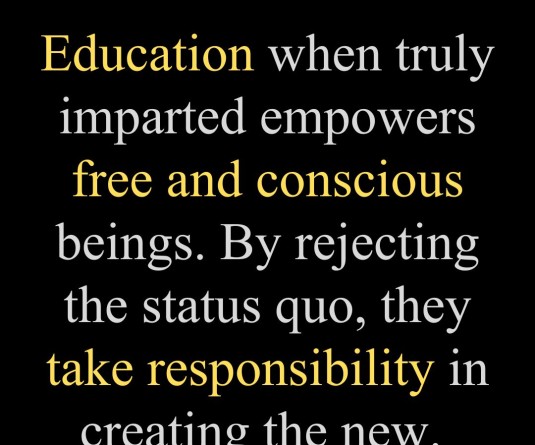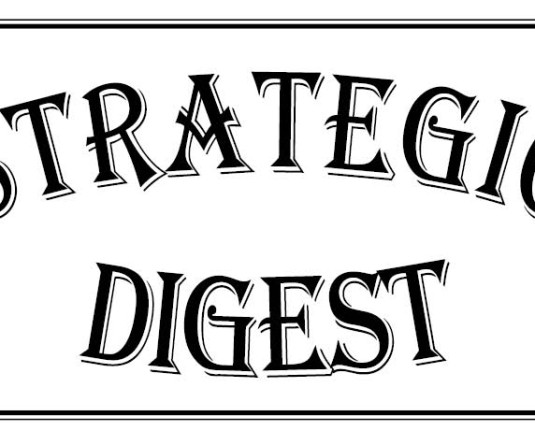
Dr Monalisa Tase and Dr Monojit Das
The global strategic environment in October 2025 is marked by a complex interplay of regional turbulence, economic realignments, and normative battles over legitimacy and sovereignty. President Trump’s attention on Bagram airbase in Afghanistan, the acceleration of India–EU trade negotiations, renewed momentum behind the Palestinian statehood debate at the United Nations, and Pakistan’s own domestic contradictions all reflect how multipolarity is reshaping the international system. For India, these developments represent both risks and opportunities: the need to guard against new security threats in its extended neighbourhood, especially the recent change of regime in Nepal, therefore, securing long-term economic partnerships, upholding its principled diplomacy, and responding decisively to Pakistan’s provocations. Together, they underscore the urgency of a calibrated strategic posture that combines hard power readiness with proactive diplomacy and economic statecraft.
1. Trump, Bagram, and the Taliban: A Shifting South Asian Chessboard
The latest confrontation between Washington and Kabul has injected fresh turbulence into South Asia’s fragile security environment. On 20 September 2025, U.S. President Donald Trump demanded that Afghanistan hand back the strategically vital Bagram Air Base, warning that “bad things are going to happen” if his ultimatum was ignored. The Taliban’s response was swift and uncompromising, with spokesman Zabihullah Mujahid asserting that Afghanistan would “never” cede an inch of its soil. This war of words is more than rhetorical as it reopens old wounds in the region’s geopolitical order. Bagram, once the nerve center of U.S. operations in Afghanistan, remains symbolically tied to America’s “forever war.”
For India, these developments are neither distant nor abstract. Afghanistan’s trajectory has always carried direct spillovers into South Asia: the radicalization of youth in Pakistan’s tribal areas, the cross-border movement of fighters into Kashmir, and the resurgence of narcotics-driven funding streams for militant outfits. However, the risk is further compounded by political volatility in India’s extended neighbourhood. Nepal, for instance, has been thrown into a new phase of uncertainty after youth-led protests in September 2025 forced a regime change, toppling the fragile coalition government. The uprising, driven by frustrations over unemployment, corruption, and perceived elite complacency, has opened the door to new actors whose stance on India, China, and the West remains untested. This upheaval mirrors a broader pattern of discontent among South Asian youth, an audience vulnerable to ideological radicalization when political institutions fail to deliver.
Bangladesh too remains on edge amid political flux, with opposition groups amplifying anti-India rhetoric to galvanize support. India cannot afford to treat this as U.S.–Taliban theatrics playing out at a distance. Instead, New Delhi must adopt a layered, proactive strategy. First, it must enhance border management and counterterrorism readiness, especially in Jammu & Kashmir, to prevent militant infiltration surges. Second, intelligence coordination with regional partners Nepal, Bangladesh, and Southeast Asian allies must be stepped up to track transnational flows of fighters, funds, and propaganda. Third, while formal recognition of the Taliban regime remains off the table, calibrated engagement with Kabul’s interlocutors is essential to protect Indian development projects, safeguard connectivity initiatives, and prevent India from being sidelined in Afghanistan’s evolving political order.
2. India–EU FTA Talks: Opportunities and Red Lines
Union Commerce and Industry Minister Piyush Goyal’s recent meetings with EU Commissioners Christophe Hansen and Maros Sefcovic in New Delhi have injected new momentum into the long-awaited India–EU Comprehensive Free Trade Agreement (FTA). The 13th round of negotiations, held this month, saw progress on several fronts, with 11 chapters already finalized covering customs, digital trade, and capital movement. However, sticking points remain on tariffs for sensitive products such as dairy and wine, as well as on rules of origin and broader market access provisions.
For India, the stakes could not be higher. The EU is India’s largest trading partner, with bilateral trade in goods crossing $135 billion in 2023–24. A well-calibrated FTA could boost India’s auto, pharmaceutical, and digital sectors, attract greater investment flows, and integrate Indian firms into European value chains. At the same time, New Delhi must guard against asymmetric concessions that could disadvantage domestic producers, particularly in agriculture and small-scale industries.
What makes this round of negotiations particularly significant is the EU’s growing interest in defence and security cooperation with India, as seen in the visit of the EU Political and Security Committee delegation to New Delhi. This signals that the FTA is not just about trade liberalization but also about anchoring India more firmly in Europe’s strategic calculus at a time when Brussels is recalibrating its dependencies on both the U.S. and China. For India, the challenge lies in striking a balance between ambition and prudence—leveraging the FTA to secure long-term economic growth while ensuring that regulatory frameworks remain fair and inclusive.
3. Recognition of Palestinian Statehood: A Normative Turning Point
At the 80th session of the United Nations General Assembly (UNGA), ten European states, France, Luxembourg, Malta, Monaco, Belgium, San Marino, Australia, Portugal, Great Britain, and Canada formally recognized Palestine as a sovereign state. This move is a significant diplomatic breakthrough for the Palestinian cause, signalling widening global frustration with the prolonged stalemate in the Israel–Palestine conflict and the humanitarian crisis in Gaza. It also reflects the fragmentation of Western unity, as U.S. and Israeli positions increasingly diverge from those of their European allies.
For India, which has historically balanced its principled support for Palestinian statehood with growing strategic ties with Israel, this development requires careful navigation. On the one hand, India has consistently reiterated its backing for a two-state solution, rooted in its legacy as a leader of the Non-Aligned Movement. On the other hand, Israel has emerged as a critical defence and technology partner, with cooperation deepening in areas ranging from missile defence to agricultural innovation.
The widening recognition of Palestine by EU members provides India with both a diplomatic opportunity and a test. India can use this moment to reaffirm its support for Palestinian aspirations while simultaneously advocating for dialogue and de-escalation. Such a position reinforces India’s credibility as a principled actor capable of bridging divides in a multipolar world. It also underscores the value of India’s long-term strategy: avoiding binary choices and instead positioning itself as a voice for justice, moderation, and constructive engagement.
4. Pakistan’s Misplaced Priorities: Bombing Its Own People
India’s sharp rebuke of Pakistan for bombing its own citizens in Matre Dara village of Tirah Valley exposes the deep contradictions at the heart of Islamabad’s security and governance model. In an attempt to suppress local dissent and tribal insurgencies, the Pakistani Air Force carried out airstrikes that killed innocent civilians, a move widely criticized domestically but conspicuously ignored by much of the international community. The silence of global powers and even the UN highlights the selective application of human rights discourse in international politics.
For India, this incident underscores two realities. First, Pakistan’s military establishment remains more focused on coercive control over its population than on addressing its deepening economic crisis. Second, the global community’s muted reaction reveals a gap in the normative order, where strategic interests often override humanitarian concerns. India’s statement that Pakistan should “focus on restoring its economy if done bombing its own people” resonates not just as a critique of Islamabad’s misplaced priorities but also as a reminder of the credibility gap in international responses.
This episode also highlights the dangers of double standards in global governance. While the world is quick to condemn certain actors, Pakistan’s repeated violations of human rights largely escape unaccountability. India must persist in highlighting this inconsistency at multilateral platforms, while simultaneously reinforcing its counterterrorism strategy to ensure Islamabad does not deflect its internal crises through cross-border provocations.
Conclusion: India’s Strategic Compass in a Fragmented World
September 2025 offered a sobering reminder of how fragile and unpredictable the global order has become. From Trump’s engagement with the Taliban to the EU’s recognition of Palestine, from the stalled India–EU FTA talks to Pakistan’s self-inflicted wounds, the world is not just multipolar, it is increasingly fractured. For India, this environment presents formidable challenges but also unprecedented opportunities to assert itself as a stabilizing and shaping power.
India’s path forward must rest on four pillars. First, regional vigilance, particularly in South Asia, where instability in Afghanistan, Pakistan, Nepal, and Bangladesh can have direct spillover effects on Indian security. Second, economic statecraft, with the India–EU FTA as a litmus test of New Delhi’s ability to secure mutually beneficial trade deals while protecting domestic interests. Third, principled diplomacy, reflected in India’s balanced stance on the Israel–Palestine conflict and its broader commitment to justice and sovereignty. Fourth, normative leadership, where India exposes global double standards and positions itself as a credible advocate for human rights and multilateralism.
Ultimately, India’s role in this fractured world will not be defined by reacting to others’ moves but by proactively shaping the agenda, whether through reviving inclusive platforms like NAM 2.0, leveraging its G20 legacy, or joining with African partners and strengthening the Indo-Pacific security framework. The strategic compass for India in October 2025 is clear: remain vigilant, stay ambitious, and act as a bridge-builder in an era where bridges are in short supply.
Dr. Monalisa Tase, Assistant Professor, Nagaland University and Dr. Monojit Das, Independent Geopolitical Analyst





